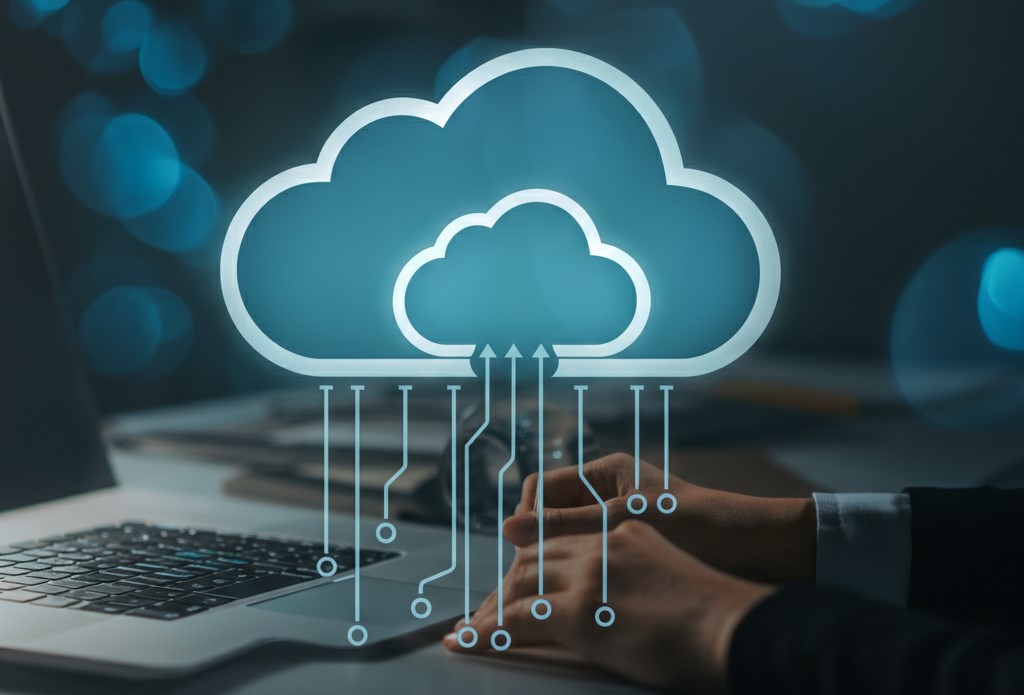Virtualization lies at the heart of cloud computing, serving as a cornerstone for its functionality. By dividing a physical device into virtual segments, it enables resource sharing and maximizes the efficiency of technology utilization. This approach not only supports scalability but also facilitates seamless expansion to meet growing demands. As a pivotal element of cloud computing, virtualization provides the foundation for cost-effective, flexible, and adaptable IT infrastructure. In this article, we’ll explore the various types of virtualization used in the cloud and their key advantages.
Virtualization has been a cornerstone of computing since the early days of mainframes, when high hardware costs drove the need for efficient resource use. As technology advanced, so did virtualization, evolving into a core mechanism for optimizing resources and reducing costs in today’s cloud computing era.
What is Virtualization in Cloud Computing?
Virtualization is a key technology in cloud computing that transforms physical resources—such as servers, networks, and storage—into virtual instances that operate independently. This process enhances efficiency, flexibility, and scalability, making it an essential component of modern cloud systems.
In simple terms, virtualization is the creation of a virtual version of a physical resource, such as a server, operating system, storage device, or network. By leveraging virtualization, a single physical device can host multiple virtual instances, maximizing resource utilization and streamlining management. This capability enables cloud environments to efficiently allocate and manage resources, driving optimal performance and adaptability.
Types of Virtualization
Virtualization comes in several forms, each offering unique capabilities and benefits. Here’s a breakdown of the most common types:
1. Server Virtualization
Server virtualization partitions a single physical server into multiple virtual servers, each running its own operating system (OS). This allows multiple applications to operate efficiently on one physical machine, maximizing resource utilization. It also provides the flexibility to scale resources up or down as needed. Among all virtualization types, server virtualization is the most widely adopted in cloud computing.
2. Network Virtualization
Network virtualization overlays a logical network on top of physical network infrastructure, enabling multiple virtual networks to function independently and simultaneously. This reduces dependency on physical hardware, cuts costs, and allows for better resource optimization. Additionally, network virtualization simplifies configuration and management, providing greater flexibility for evolving business needs.
3. Storage Virtualization
Storage virtualization combines physical storage resources from multiple devices into a single logical storage pool. This streamlines storage management and improves allocation efficiency, reducing the need for additional physical storage devices. The approach also supports cost savings and makes it easier to manage growing data demands in cloud environments.
Benefits of Virtualization
Virtualization offers a range of advantages that make it indispensable in cloud computing:
- Cost Efficiency: By sharing physical hardware among virtual entities, organizations can significantly reduce hardware costs.
- Scalability: Virtualization enables seamless resource allocation, making it easy to scale workloads up or down based on demand.
- Flexibility: Virtualized environments are highly adaptable, allowing organizations to reconfigure resources quickly to meet changing requirements.
- Disaster Recovery: Virtual machines (VMs) can be replicated and deployed on other servers in case of failure, ensuring minimal downtime for critical applications.
- Resource Optimization: Virtualization improves efficiency by maximizing resource utilization and enhancing application performance.
- Sustainability: By reducing reliance on physical hardware, virtualization lowers energy consumption and contributes to greener computing.
Virtualization lies at the heart of modern cloud computing, enabling businesses to achieve greater efficiency, flexibility, and cost savings while delivering scalable and reliable services. As the demand for cloud infrastructure continues to grow, the significance of virtualization only becomes more pronounced.
Common Uses of Virtualization
Virtualization has revolutionized the IT landscape, offering flexibility and efficiency across various applications. Here are some of the most common use cases:
- Server Consolidation: Virtualization allows multiple independent servers to operate on a single physical machine, reducing hardware costs and simplifying management. This is particularly useful for small businesses with limited resources.
- Development and Testing: Virtualization allows developers to test software in diverse environments without the need to set up and maintain multiple physical machines. This approach saves time, reduces costs, and simplifies debugging.
- Disaster Recovery: In the event of hardware failure, virtualization enables rapid deployment of backup virtual machines (VMs) on alternate servers, minimizing downtime for critical operations.
- Data Center Consolidation: Organizations can reduce physical server footprints, energy usage, and management costs by consolidating servers through virtualization, optimizing data center efficiency.
- Application Deployment: Virtualization accelerates the deployment of new applications or the migration of existing ones to new servers, minimizing both downtime and reconfiguration efforts.
- Legacy Application Migration: By virtualizing legacy applications, organizations can overcome compatibility issues and extend the lifespan of older software.
- Cloud Hosting Services: Many cloud service providers utilize virtualization technology to offer highly scalable, cost-effective infrastructure for hosting websites and applications.
Challenges of Cloud Virtualization
While virtualization offers undeniable benefits, it also presents challenges that organizations must navigate for successful implementation in cloud environments:
- Complexity: Managing multiple layers of abstraction can become overwhelming without clear planning and robust execution strategies.
- Security Risks: Sharing resources among multiple applications and users increases the chance of vulnerabilities, making data security a key concern.
- Resource Allocation: Virtualization simplifies resource provisioning but monitoring usage and minimizing over-provisioning remain difficult tasks.
- Compatibility Issues: Lack of interoperability between different virtualization technologies can complicate application migration and integration.
To address these challenges, organizations should prioritize proactive planning, ongoing monitoring, and optimization of their virtualized environments. Regular oversight ensures seamless performance and maximizes virtualization’s potential benefits.
Beyond Cloud Computing: The Broader Applications of Virtualization
While virtualization is often synonymous with cloud computing, its utility extends far beyond the cloud. In on-premises environments, it is widely used to consolidate servers, optimize resources, and enable robust disaster recovery strategies.
Virtualization also plays a pivotal role in:
- Desktop Virtualization: Centralizing desktop management and enabling secure remote access for users.
- Network Function Virtualization (NFV): Replacing traditional hardware with virtualized equivalents to streamline network operations and reduce costs.
- Software-Defined Networking (SDN): Enhancing network flexibility and efficiency by leveraging virtualization techniques to manage and direct traffic dynamically.
As new innovations emerge, virtualization continues to evolve, cementing its status as a cornerstone of modern technology across industries.
Conclusion
In conclusion, virtualization is critical to the success of cloud computing, delivering benefits such as cost efficiency, scalability, flexibility, disaster recovery, and eco-friendly IT practices. By maximizing resource utilization and simplifying infrastructure management, it has become an essential component of contemporary IT strategies.
To harness its full potential, organizations must implement virtualization thoughtfully and effectively. When integrated into a broader cloud strategy, virtualization can create a streamlined, cost-efficient, and future-ready IT environment—empowering businesses to thrive in the digital age.
Click here for a post on the use of elasticity in cloud computing.





